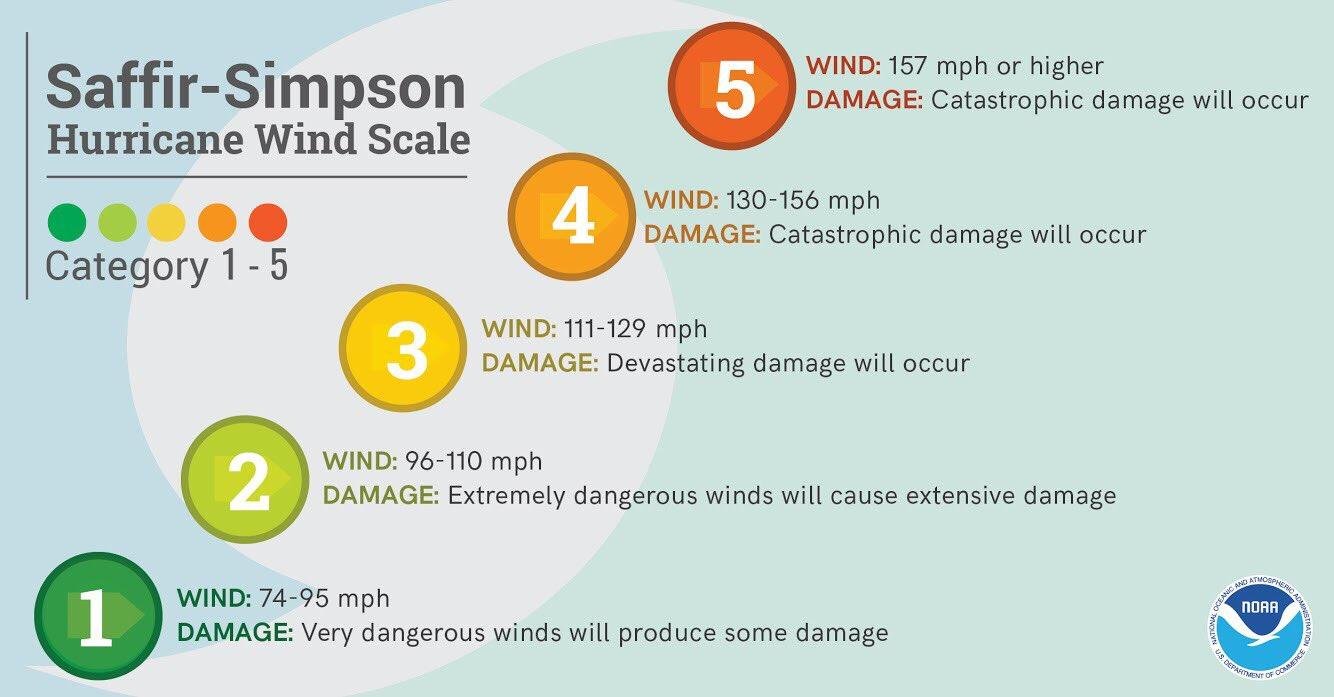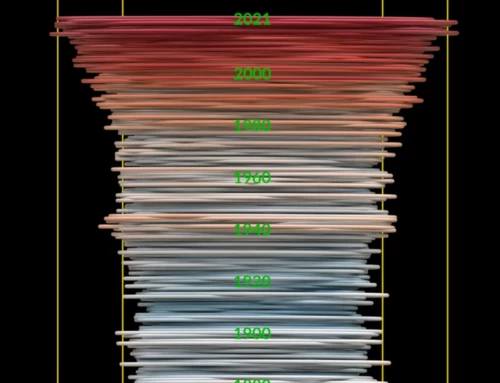The Atlantic hurricane season officially starts on 1st June and ends on 30th November. Since 1953 all Atlantic tropical storms have been named based on a 6 year recycling list (see below).
For the current season here’s the latest status.

And in terms of the latest detailed advisories from the National Hurricane watch centre, this is what they have currently issued.
The six lists below are used in rotation and re-cycled every six years – so for example the 2023 list will be used again in 2029.
The only time that there is a change in the list is if a storm is so deadly or costly that the future use of its name on a different storm would be inappropriate for reasons of sensitivity.
If that occurs, then at an annual meeting by the World Meterological Organisation the offending name is stricken from the list, and another name is selected to replace it. Several names have been retired since the lists were created, for example Florence in 2018, Irma in 2017 and Irene in 2011.
| 2023 | 2024 | 2025 | 2026 | 2027 | 2028 |
|---|---|---|---|---|---|
| Arlene | Alberto | Andrea | Arthur | Ana | Alex |
| Bret | Beryl | Barry | Bertha | Bill | Bonnie |
| Cindy | Chris | Chantal | Cristobal | Claudette | Colin |
| Don | Debby | Dexter | Dolly | Danny | Danielle |
| Emily | Ernesto | Erin | Edouard | Elsa | Earl |
| Franklin | Francine | Fernand | Fay | Fred | Farrah |
| Gert | Gordon | Gabrielle | Gonzalo | Grace | Gaston |
| Harold | Helene | Humberto | Hanna | Henri | Hermine |
| Idalia | Isaac | Imelda | Isaias | Imani | Idris |
| Jose | Joyce | Jerry | Josephine | Julian | Julia |
| Katia | Kirk | Karen | Kyle | Kate | Karl |
| Lee | Leslie | Lorenzo | Leah | Larry | Lisa |
| Margot | Milton | Melissa | Marco | Mindy | Martin |
| Nigel | Nadine | Nestor | Nana | Nicholas | Nicole |
| Ophelia | Oscar | Olga | Omar | Odette | Owen |
| Philippe | Patty | Pablo | Paulette | Peter | Paula |
| Rina | Rafael | Rebekah | Rene | Rose | Richard |
| Sean | Sara | Sebastien | Sally | Sam | Shary |
| Tammy | Tony | Tanya | Teddy | Teresa | Tobias |
| Vince | Valerie | Van | Vicky | Victor | Virginie |
| Whitney | William | Wendy | Wilfred | Wanda | Walter |
If a storm forms in the off-season, it will take the next name in the list based on the current calendar date. For example, if a tropical cyclone formed on December 28th, it would take the name from the previous season’s list of names. If a storm formed in February, it would be named from the subsequent season’s list of names.
In the event that more than twenty-one named tropical cyclones occur in the Atlantic basin in a season, additional storms will take names from the Greek alphabet (starting with Alpha, then Beta etc. etc.)
Categorisation of Hurricanes
To determine which category a storm belongs in, meteorologists use something called the Saffir Simpson Hurricane Wind Scale, which measures a hurricane’s strength based sustained wind speed.
The scale was originally developed by wind engineer Herb Saffir and meteorologist Bob Simpson in the mid-70s and has been used ever since to help alert the public so they can prepare for the possible impact of impending storms.
The scale lays out the speed of the wind and the type of damage and impact it can have.
The system divides storms into five categories, and in general, damage rises by about a factor of four for every category increase.

If you enjoyed reading this, the please explore our other articles below:




